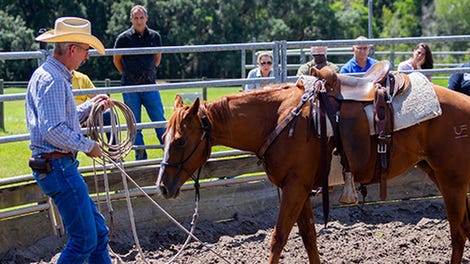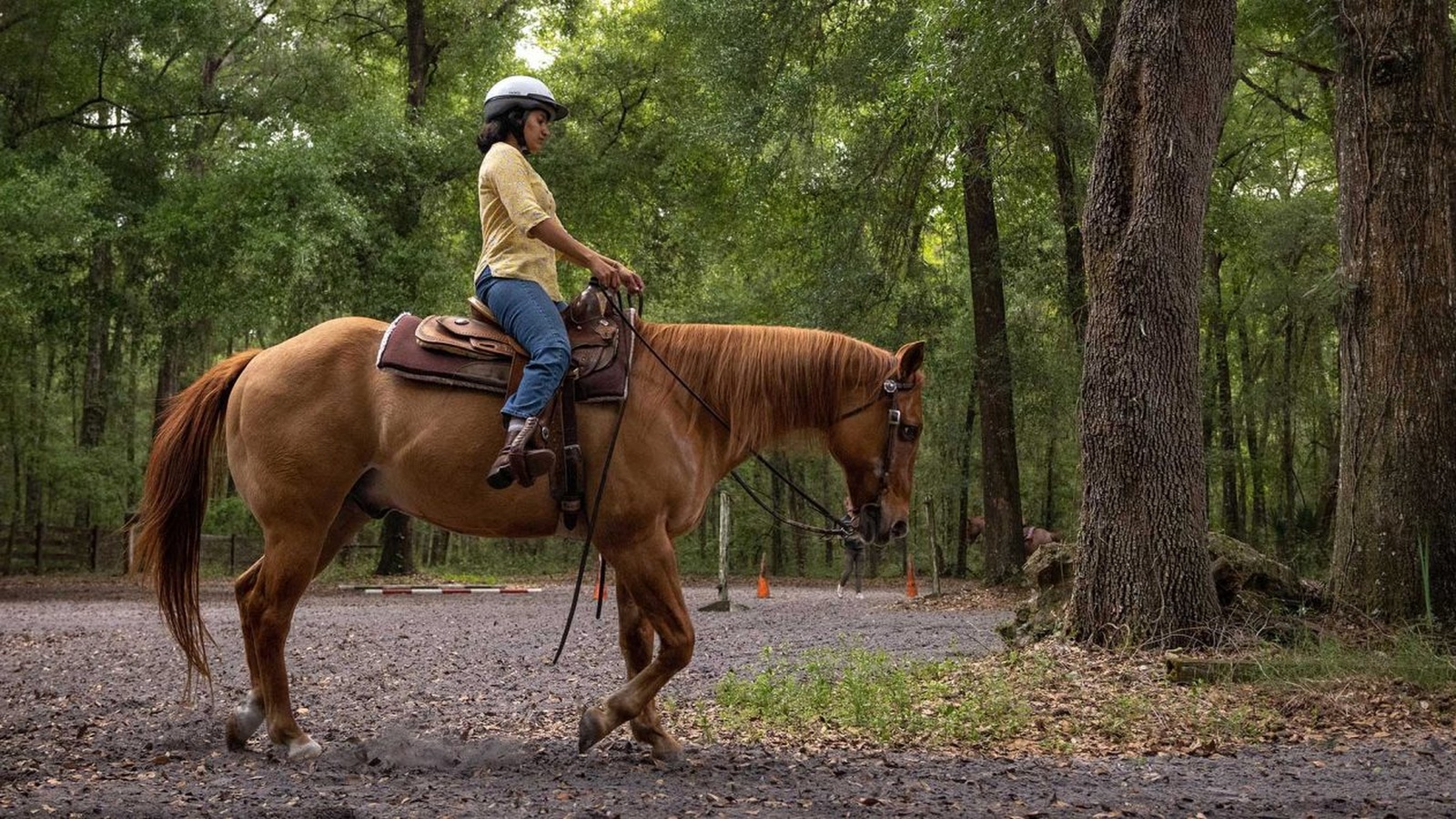Eakta Jain learned to ride horses to understand how horses can influence the design of future robots. UF News.
You might think that a future where animals are replaced by robots is dystopian. Yet, whether horses carrying or pulling heavy loads or guard dogs, working animals have already been supplanted by machines. Think about automobiles or IoT-based alarm systems.
And today we are at the dawn of a new change. Another type of machine will perform even more complex tasks for humans, notably in health, education and industry.
Yet, at present, there are no “guiding principles” governing the interaction between humans and robots. In other words, we need to think about how humans and robots should communicate with each other to maximize efficiency and minimize disruption – and maybe even bond?
Science fiction writer Isaac Asimov was the first to attempt to regulate this relationship when he created a set of rules in 1942. These rules are: don’t let humans harm you, obey orders (and don’t break rule 1), and protect yourself (and don’t break rule 2).
Why dogs are not necessarily the good example
At a time when we are talking about the disappearance of humanity due to the impact of AI, Asimov’s rules may seem sensible, even if they are a little vague. Unfortunately, these rules are also too simplistic and do not really inform about the complexity of current robots.
The study of the behavior of dogs and the way in which they influence the relationship with their masters offers another way of studying the matter. Because canines seem to appreciate human company as well as leadership. The problem, however, is that dogs are predators and are not the best models for the design of all robot machines. They also accompany most of their behaviors with sounds, such as barking, growling, and whining.
These are the kinds of problems that Eakta Jain, an associate professor of computer science at the University of Florida, faced when she attempted to conceptualize a framework for human-robot interactions. She was able to observe how autonomous vehicles are able to monitor other vehicles and maintain an appropriate distance from each of them, and even monitor the driver.
“Horses have interacted with humans for over 10,000 years”
It was while trying to define a reference for developing design principles for robot-human interaction that she had an idea. “Horses have interacted with humans for over 10,000 years, for transportation of goods and people, farm work, and warfare. When I started thinking about this analogy, I realized there was a lot of parallels with what robots will do,” says Ms. Jain in an interview with ZDNET.
In fact, horses are extraordinary beings. They have an astonishing ability to perceive their environment and are very receptive to their owner. They are also extremely intelligent and can be trained to function as a team.
Importantly, horses have been used all over the world, in different cultures and geographic areas. “I also realized that there was something about them that was like a universal interface with humans,” says Ms. Jain. To better understand horse behavior, she spent time at an equine center. And she realized that the only way to get a real sense of a horse’s behavior was not just to observe, but also to learn to ride.
Horses communicate primarily through nonverbal methods
For six months, Ms. Jain learned to ride horses through weekly lessons. And she was able to identify some key observational principles, which could be used in the design of robots.
The first and most important of these principles is that horses communicate primarily through non-verbal methods. They move their ears to follow the sound of movement and threats. Horses also move their ears to indicate whether or not they are listening to you. Other nonverbal signs include building tension in the muzzle, raising the neck, or stamping.
So how can we apply this knowledge in a robotic future? The researchers imagined a scenario in which non-verbal cues could play an important role, for example in the case of a person suffering from hearing loss.

Horses trained at the University of Florida Horse Training Unit in Gainesville. University of Florida
A therapeutic robot with prominent ears
A therapeutic robot could, for example, have prominent ears that point towards the human user when they listen, and towards the door when they hear a knock.
The notion of respect is another aspect that Ms. Jain and her colleague found unique to horses. “We don’t think about respect in the context of human-robot interactions,” Ms. Jain said. “How can a robot show you that it respects you? Can we design horse-like behaviors? Will this make humans more inclined to work with the robot?”
Young horses are trained early on to move away or back away when a human approaches them. Likewise, a horse that moves at the pace of the trainer indicates that he holds the human in high esteem.
Configure the direction of hierarchy
Hospitals, where robots are expected to assist nurses and doctors, following them, stopping and starting in tandem with their human counterparts, are also ideal spaces to illustrate this design principle in a real-world scenario.
If you remember the quarrels between R2-D2 and C-3PO in Star Wars, for example, you may have an idea of the clash that could take place between different types of robots, who refuse to give way to each other. place for each other. By using horse behavior, such as size or type to determine dominance hierarchy and, therefore, respect, robots can be designed to give way to each other based on their position in the established hierarchy, and to determine who has priority to deliver their item first as part of the delivery robots.
Dr. Jain’s research also shows that different horses have different abilities. For what ? Because they are bred for specific traits. Similarly, robots and humans have different abilities and, when working together, different speeds. Thus, any future relationship between a human and a robot requires both parties to get used to each other and learn as they work together during the early stages of the relationship.
Learn to walk side by side with a human
For example, a package-carrying robot that must stay a set distance from a human must learn to walk at varying speeds. This is so that the robot can acclimatize to the walking pattern of that specific human. And this taking into account speed, pace or rhythm. In other words, the robot will adapt its habits to the human it works with.
This type of early learning through repetitive tasks is particularly crucial in certain scenarios, such as in a factory, where humans have a particular posture or gait. This education process will help avoid slip-ups or the development of a counterproductive feeling of disdain towards the robotic partner.
As a new era for robots dawns, the way we communicate with our counterparts, the methods with which we train them, and the way we view them could become a crucial marker of success.
Source: “ZDNet.com”
